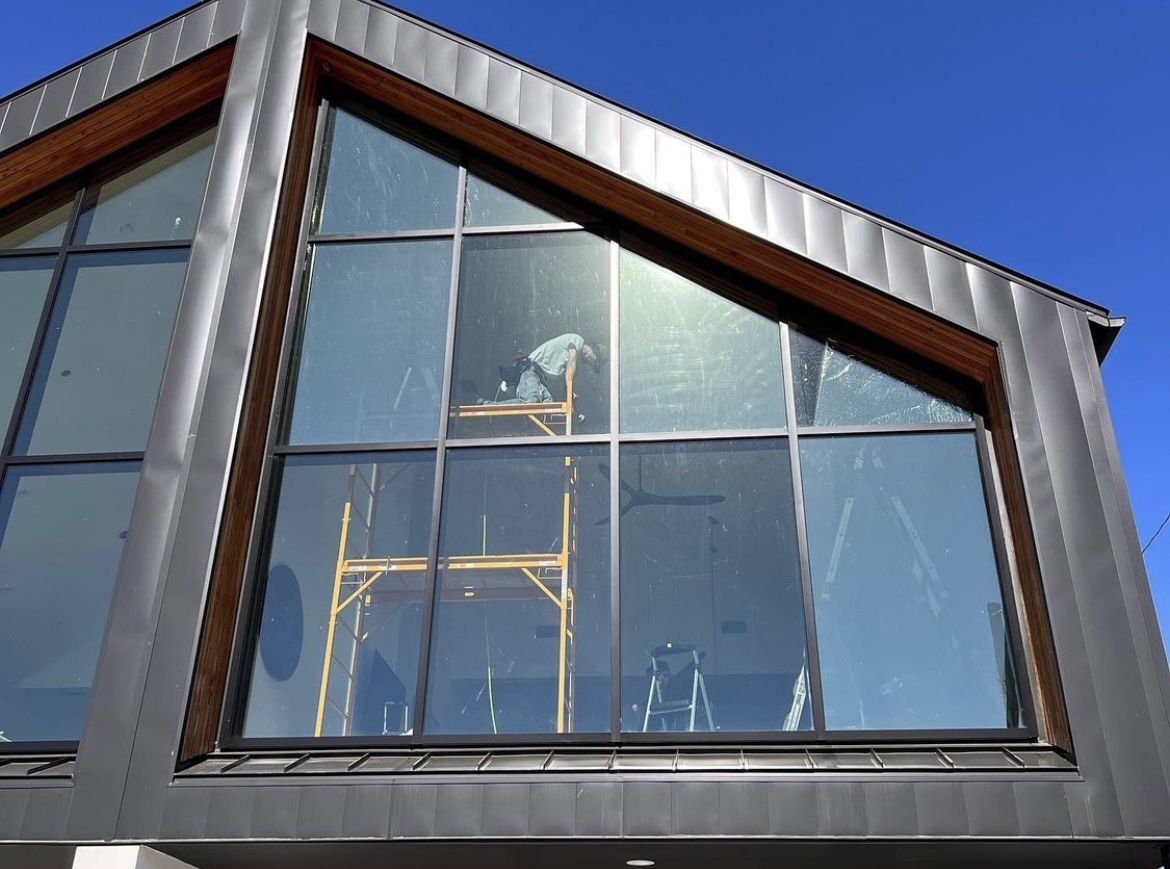Discover the Long-Term Advantages of Residential Window Tint for Your Home
Discover the Long-Term Advantages of Residential Window Tint for Your Home
Blog Article
Exactly How Residential Window Tinting Improves Your Home's Power Performance
Residential window tinting presents an engaging option for homeowners looking for to enhance power effectiveness within their living rooms. By using specialized films to windows, it effectively reduces warmth transfer, consequently supporting interior temperatures and minimizing the requirement for excessive heating or cooling.
Understanding Home Window Tinting
Understanding window tinting is essential for home owners seeking to boost both convenience and power efficiency in their living rooms. Residential Window Tint. Window tinting entails the application of a slim film to the inside or exterior surface of glass windows. This movie can dramatically regulate the quantity of sunlight and warmth that enters a home, thus affecting interior environment problems
There are various types of window tinting films readily available, each with unique buildings. The efficiency of home window tinting is usually gauged by its Visible Light Transmission (VLT) percentage, which indicates exactly how much light can pass with the film.
Advantages of Power Effectiveness
Window tinting not only boosts appearances but also plays a significant role in boosting power efficiency within household spaces. By reducing warm transfer through windows, colored movies create a more steady interior environment, which can result in substantial decreases in power intake for heating and cooling. This power performance equates into reduced energy costs, offering property owners with considerable long-lasting cost savings.

Additionally, window tinting boosts the comfort of living rooms. By lessening glow and blocking harmful UV rays, colored windows produce a more pleasurable environment, which can lead to boosted health for owners. The security versus UV rays additionally helps maintain furniture and floor covering from fading, adding to the durability of family things.
Exactly How Tinting Works
Tinting films run with a combination of innovative materials and modern technologies designed to manage the quantity of solar power entering a home. Mostly composed of polyester, these films typically incorporate metallic or ceramic fragments that soak up and show warm. This dual capability enables them to considerably decrease the penetration of ultraviolet (UV) rays and infrared radiation while allowing noticeable light to go through.
The efficiency of window tinting is gauged by its solar warmth gain coefficient (SHGC), which shows just how much solar energy is sent through the window. Reduced SHGC values are better as they represent higher heat denial. Additionally, window colors can include a selection of tones, permitting home owners to personalize their visual choices while enhancing energy effectiveness.
Furthermore, these movies act as an obstacle, stopping warmth loss during colder months by mirroring indoor warmth back right into the living room. This thermal insulation result enhances the air conditioning advantages gotten during warmer months, adding to a balanced indoor climate year-round. By handling solar power successfully, household home window tinting not just this website enhances convenience but additionally plays an important function in minimizing power intake and reducing utility bills.
Picking the Right Tint

There are various types of home window movies offered, consisting of colored, metalized, and ceramic. Dyed films are economical but may have limited durability. Metalized films supply much better warm rejection but can hinder electronic signals. Ceramic movies offer exceptional warmth my response control without compromising presence and are very resilient, making them a preferred choice.
Noticeable light transmission (VLT) is one more crucial factor, as it suggests the amount of natural light that can go through the colored glass. House owners must pick a color with a VLT that enhances their lighting choices while still giving appropriate glow decrease.
Furthermore, analyzing the solar heat gain coefficient (SHGC) can aid determine just how well a color can obstruct warmth from sunlight. A reduced SHGC shows much better warmth control, inevitably boosting energy effectiveness.
Installation and Maintenance Tips
Proper setup and maintenance are crucial parts in optimizing the advantages of residential window tinting. To attain optimum results, it is advisable to work with a certified professional for setup. This guarantees that the color is applied properly, preventing air bubbles, creases, or misalignment that could compromise efficiency. Professionals additionally make use of specialized strategies and devices, which can enhance the resilience and efficiency of the color.
Adhering to setup, upkeep is crucial to lengthen the life of the window film. It is suggested to wait at least 30 days before cleaning up the colored home windows to enable the sticky to treat totally.
Attending to these concerns without delay can stop additional damages and maintain energy performance. By adhering to these installation and upkeep suggestions, home owners can ensure their home window tinting continues to provide considerable energy cost savings and convenience for years to come.
Conclusion
To conclude, domestic window tinting functions as an effective option for improving energy efficiency within homes. By lowering warm transfer and obstructing hazardous UV rays, home window films contribute to decrease energy intake look at more info and enhanced indoor comfort. The selection of proper tinting products, together with correct setup and maintenance, better makes the most of these advantages. Ultimately, window tinting stands for a lasting investment that not only lowers energy costs however likewise advertises a comfortable living environment throughout the year.
Home window tinting involves the application of a slim movie to the interior or outside surface area of glass windows. By minimizing warmth transfer through home windows, tinted films create an extra steady indoor climate, which can lead to substantial reductions in power intake for home heating and air conditioning.The performance of window tinting is determined by its solar warmth gain coefficient (SHGC), which indicates exactly how much solar power is transmitted via the window. By handling solar energy properly, household home window tinting not only enhances convenience but also plays a crucial role in decreasing power intake and reducing energy expenses.
By minimizing heat transfer and obstructing hazardous UV rays, home window films add to reduce energy intake and improved interior comfort.
Report this page